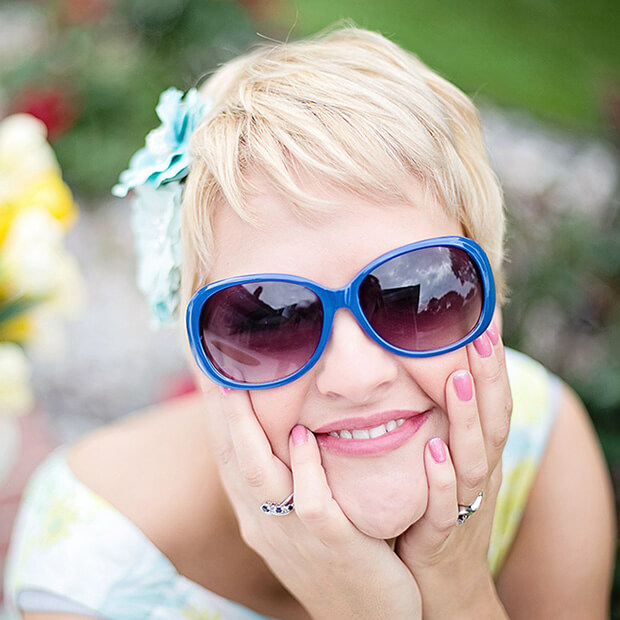Don’t Forget Your Sunglasses!

With summer almost here, many of us are looking forward to spending a lot of time outdoors.
Before we head out, though, we need to make sure we’re protecting ourselves from the sun’s UV rays, both with sunscreen for our skin and with sunglasses for our eyes.
Why We Need UV Protection
We all know that we can get nasty sunburns if we stay outside too long without sunscreen, but did you know that our eyes can be damaged in similar ways by too much sunlight? UV-A rays reach all the way to our retinas and can lead to macular degeneration (loss of central vision), while UV-B rays affect the cornea and lens, causing corneal sunburns and increasing the risk of developing cataracts.
Sunglasses Have Come A Long Way
The earliest form of sunglasses were flattened walrus ivory with slits across the front, made by the Inuit people to protect against glare from the snow. They worked pretty well, and the same principle is used in modern polarized lenses. Non-polarized sunglasses became popular thanks to early film stars, but polarized lenses weren’t developed until the mid-1930s.
Over the decades, sunglasses have gone through numerous different styles. The cat-eye frame was made popular in the 1950s by Marilyn Monroe and Audrey Hepburn, the ’60s saw the big bug-eyed frames take off because of Jackie Kennedy, and so on. These days, everyone has a unique style, taking inspiration from many of the past decades. And while we always like to look cool in our shades, the most important factor should always be that they do an effective job of protecting our eyes from the sun.
Finding The Right Pair
The first thing to look for when choosing new sunglasses is UV protection. When you buy sunglasses, make sure the label says they block at least 99 percent of UV rays. The next thing to look for is the size. Although most sunglasses are chosen for their style, opting for a style that has wider frames will allow more coverage and protection. Choosing frames that sit closer to the eyes will help to make sure you get more coverage too!
Another variable to consider apart from style is the color of the lenses, because different colors provide different benefits. Yellow and amber lenses filter out blue light, which makes them great for sports, while rose and purple lenses increase contrast against blue and green backgrounds, which makes them great for hunting and water skiing. Whatever color you choose, though, polarized lenses will give you the best glare reduction.
Come Try On Our Shades
If you’re still not sure which sunglasses are right for you, don’t stress. Come see us and we can help you pick out the perfect ones to suit your style and protect your eyes. We can fit them to you as well and make sure you’ll get the most UV protection possible!








